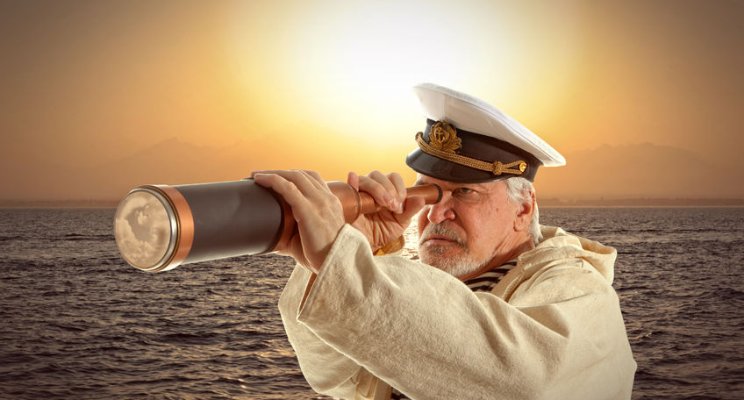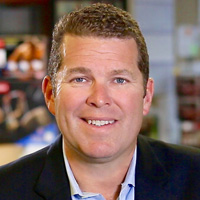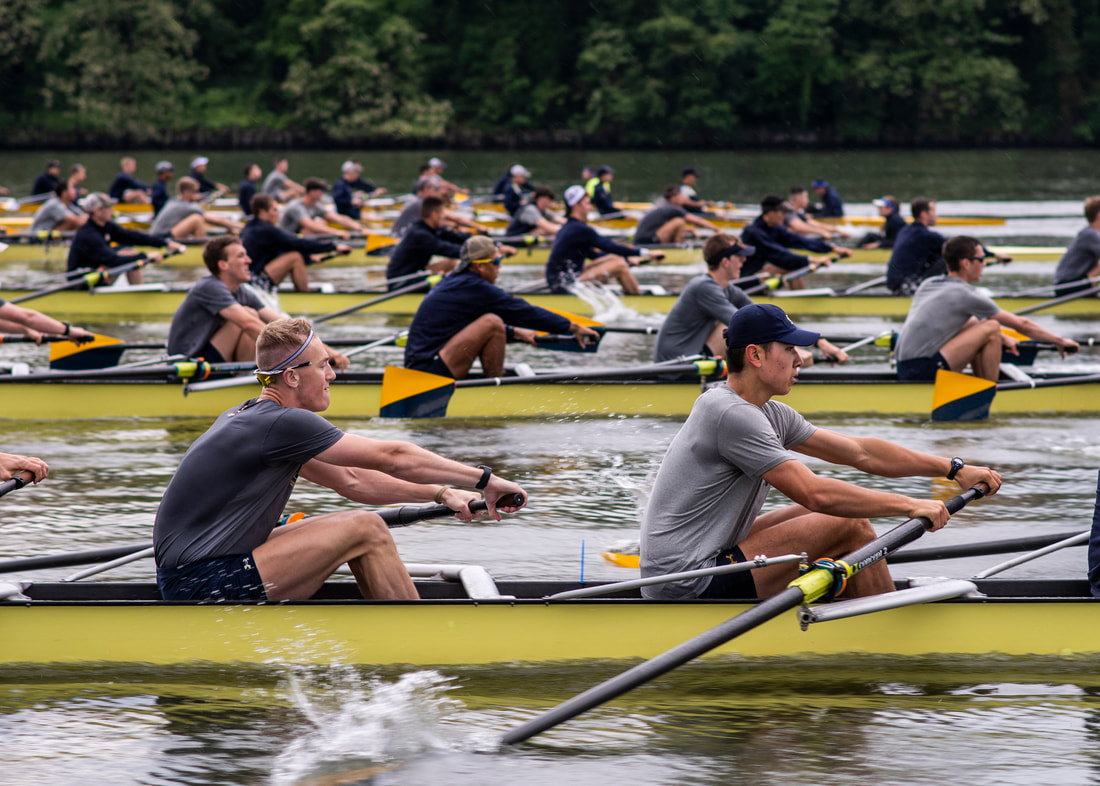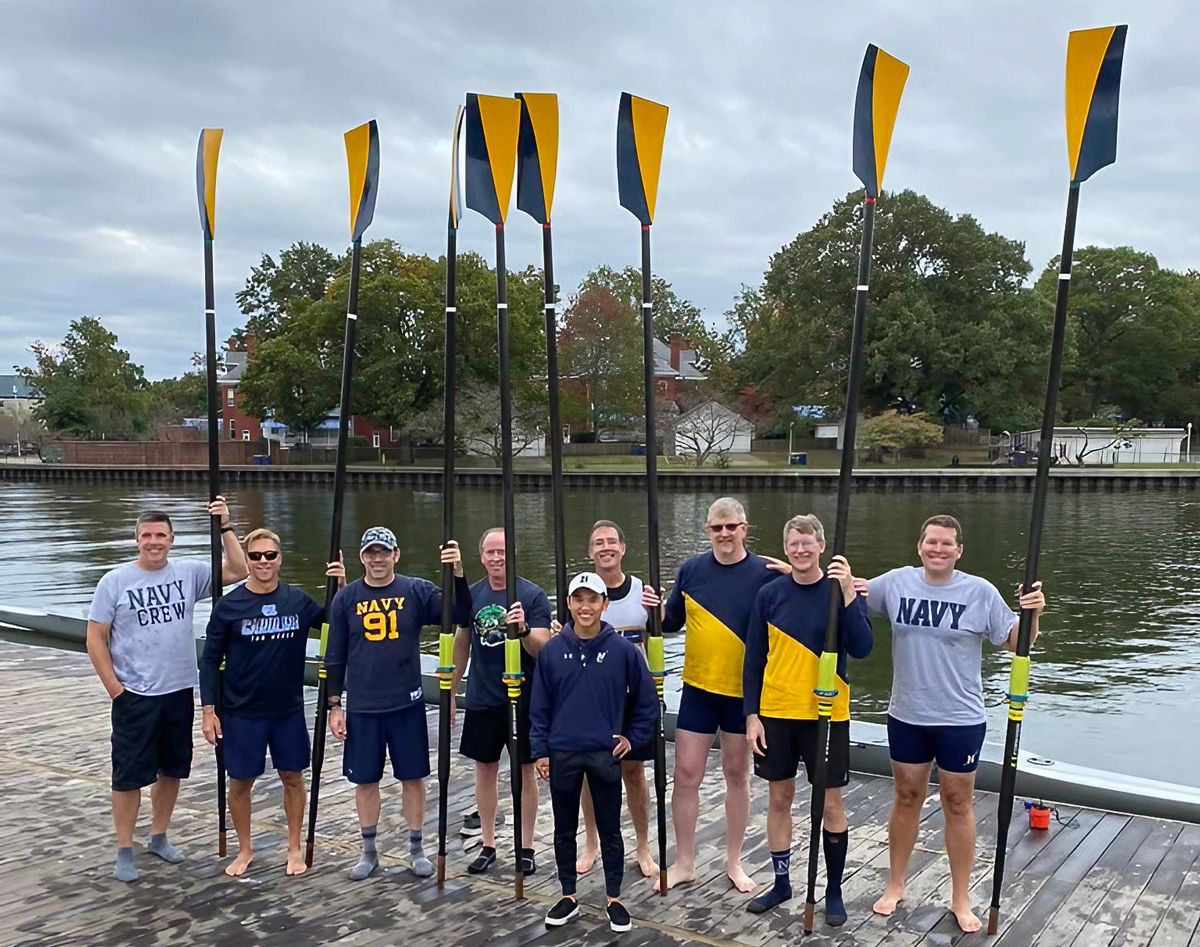This is Part 2 of my “Goals” series. Find Part 1 Here.
Seamanship and Navigation (SN 101/2) classes are taught first and second semesters of your Plebe (freshman) year at the U.S. Naval Academy in Annapolis, Maryland. I remember it well because it was one of the few classes I actually enjoyed as a Plebe. For starters, it’s taught in a classic nautical building located directly across the quay wall of the Chesapeake Bay. Inside, the hallways have all kinds of maritime memorabilia along with walls (bulkheads in Navy speak) covered with bronze plaques of quotations from famous Naval Officers. One of my favorites is from the founder of the United States Navy, John Paul Jones – it was paraphrased to read:
“He who will not risk, cannot win”
The original full quotation is:
“It seems to be a law of nature, inflexible and inexorable, that those who will not risk cannot win.”
John Paul Jones was a Naval pioneer who was not afraid to take risks. He wasn’t feckless with his risk taking, he knew when he had to bet it all versus back down to live to fight another day. If it weren’t for his maritime leadership during the Revolutionary war, the United States might be a whole a lot different than it is today.
I didn’t actually get great grades in the class because in part, I was too distracted daydreaming out those ocean view windows. I did, however, remember a couple of key elements that I want to share with you as you prepare to set a course for an Epic year. And I am going to use the metaphor of Seamanship and Navigation to help you understand how to chart your own Epic course. (BTW, when I use the term “course”, I’m referring to your life both personally and professionally. REMEMBER: they are both linked – you cannot have a truly EPIC life without finding balance and great satisfaction in BOTH personal and professional endeavors.)
THE HORIZON
One of the first concepts you learn from a seasoned Naval officer in SN101 is understanding how far you can see depending upon the height of your position. And I am literally referring to your height, as in a six foot tall person. Now imagine this person standing in the center of a small rowboat looking out to sea. How far can he see on a perfectly clear day with the perfect amount of sunlight? About 3 nautical miles. (FYI: A nautical mile is 2,000 yards, a few hundred yards more than a statute mile which is what your car odometer records.) However, raise that person up another six feet and now that person can see like a 12 foot giant, which means he can see a whole lot further. The higher up you stand, the further you can see. However, even if you go to outer space you still won’t be able to see all of the way around the globe, you’ll only ever see about half of it.
Why is this important?
Whether you’re setting your navigational course for a ship at sea or for your life, you must understand you have a limited view of your horizon. You’ll never be able to see all of the obstacles that lay just outside your view of the horizon. And that’s okay, because along with those obstacles lay Awesome opportunities, and like I mentioned in part one of this series; you must take a leap into “your unknown” to truly expand your horizon.
Here’s the catch…
Most folks only ever plan goals based on the horizon they can see. If you do that, then your point of view of the horizon won’t change that much. In Seamanship and Navigation terms, you’ll remain that six foot tall captain of a rowboat instead of a captain of an Aircraft Carrier with a 120 foot view of the horizon. Going from a rowboat to a carrier in horizon perspective takes time – in the Navy, it takes about 20 years (okay maybe a little bit more than that, but for our purposes let’s call it 20yrs). And that’s the horizon I want you to plan for FIRST.
LONGTERM PLANNING
Our final exam in SN 102 is charting a series of courses around the world. There’s two ways to do it: start from where you are and chart courses forward; or start from your final destination and work backwards…the latter is what I want you to do. What’s your destination 20 years from now? It’s tough to think about because your perception of today’s horizon is based upon your current capabilities, assets and resources (CARs). A good friend of mine, Jason Eckenroth – entrepreneur, EOS/Traction Coach, and founder of ShipCompliant – uses this approach and I love it so much I want to share it with you.
Your current CARs are much like the proverbial rowboat captain trying to look at her horizon. You know what you know therefore you tend to plan your goals in alignment with your CARs. The magic of goal setting starts to occur when you start to plan goals without your CARs as your focal point – when you lose sight of your limits (current CARs) and allow yourself to dream up your destiny (ies) 20 years from now.
You see, 20 years from now your CARs are going to be different, they will be more powerful, more capable and more resourceful (just think how much more productive you are since the iPhone came out 10 years ago!). So instead of always planning goals that intentionally are within your current abilities, switch your thinking and start dreaming first of what you want your life to be like 20 years from now. Then start dividing it into smaller courses from 20 years to 10 years to 5 years to 3 years all the way down to 3 months. I break my goals down into three month chunks that roll up into one year plans. The difference is my one year plans have a long term view on a distant horizon that I’m navigating toward.
One parting comment, just like navigating a ship, your courses to your final destination aren’t linear, you don’t just draw a straight line from Destination A to Destination B on a chart. In Seamanship and Navigation, you have to take into account the curvature of the earth, compass variations, the currents, the tides, the effects of the moon, seasonal weather and so much more. The point is obstacles happen and if you take the long term view on your goals you’ll be able to adjust your course but still make forward progress. If you take the short term view, you will have a tendency to focus solely on the obstacle and how it is preventing you from obtaining your short-term goal. This “tendency” can limit your horizon not just for this year but for all the horizons of your future.
You ARE the Captain of your own ship – and your ship is You, and your course is the life you choose to live. Going to sea and losing sight of land both figuratively and literally can be a daunting challenge. It can be lonely, isolating and intimidating. And if you’ve dreamed up some truly authentic 20 year goals where you haven’t the foggiest idea how you’re going to make them happen then you’re on a course for an EPIC adventure. By the way, I wouldn’t share your 20 year goals with many people because most will think you’re crazy, some might even laugh at you (it’s happened to me)…and if that’s happens, smile because they aren’t willing to takes the risks to live their lives like you are.
“…Those who will not risk cannot win!”
Your Course is Up To You,
Alden





